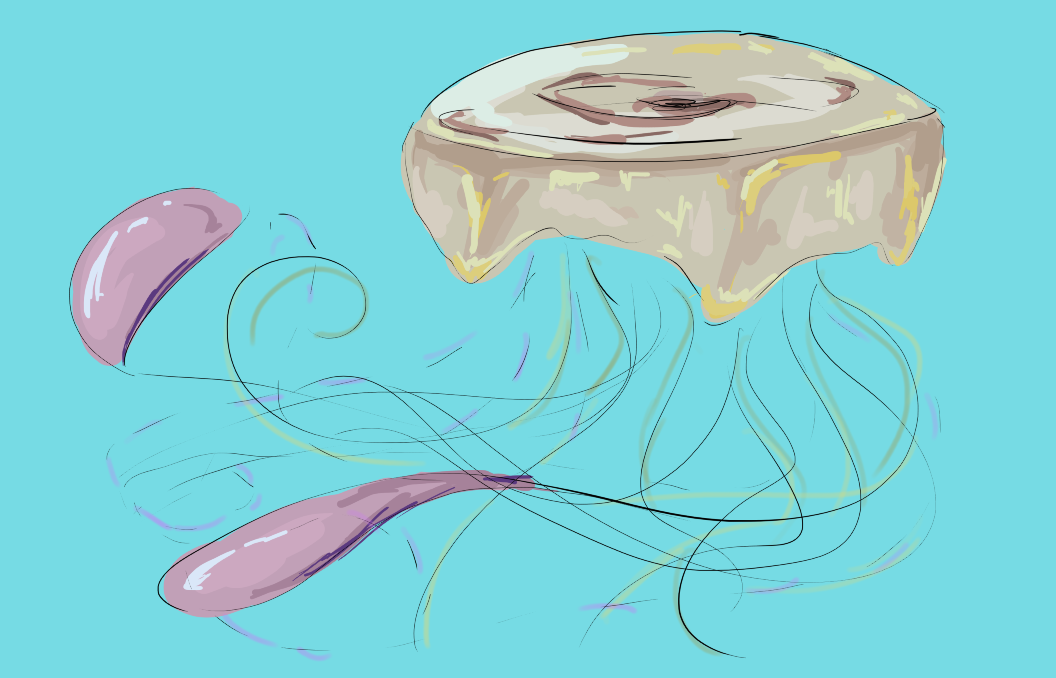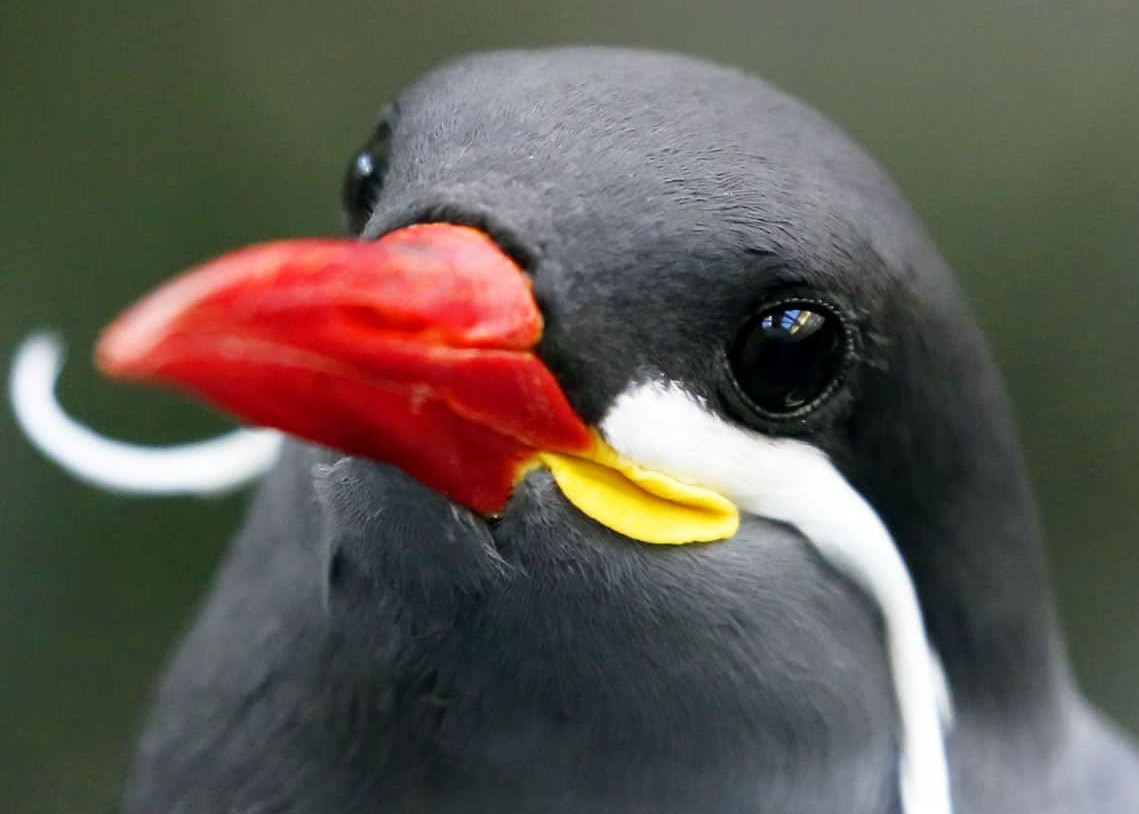False Island Jelly
False island jellies offer some of the best camouflage on Kyrophis. With their outer appearance as an underwater floating island, they draw animals in with their luscious adorned foliage, only to be electrified and boiled from the inside out.
Anatomy
The largest jelly species on the planet, false island jellies can reach 250 metres in length. While their tentacles are not particularly massive compared to their bell, their bell can reach up to a hundred metres in diameter.
The jelly's most defining features are the bell and a pair of paddle tentacles. The bell has a light brown colour, similar to a floating island from a distance. The pair of paddle tentacles are much larger than other tentacles. The paddles are a pink colour, used to dig into the seabed to stop the jelly from drifting too far, and for extra camouflage.
The gonads are a horshoe shape, similar to that of the kyrophian sun jelly of the same family, Ulmaridae.
A Savage Sting
Both paddles are lined with spiked barbs in unique patterns. If false island jellies could be approached easily, these barbs would be used to tell individuals apart. The barbs are wired to an electric organ capable of producing electricity up to 5MV.
The jellies have full control of the voltage, however, and producing that much electricity is almost never seen. It has been speculated that these paddles contain a basic nervous system, given that the jelly is known to react to pain in the paddles but no other part of the body.
False island jellies have been observed using these paddles to deter threats, too, by rustling them together to light up the surrounding waters with static electricity.
Diet
A carnivorous species, false island jellies will capture and consume anything it can kill. Producing the highest voltage seen in any species on Kyrophis, even more than what kephalons have been able to generate artificially, these jellies have no problem finding prey.
While the paddles are embedded into the ground, the other tentacles float in the water to catch prey. These tentacles do not carry a sting, instead lined with thin barbs that can pierce through thick skin and scales. The paddles then boil the prey alive and is brought to the mouth for consumption.
Reproduction & Growth
False island jellies have the same reproductive stages as any other jelly species in Ulmaridae. Life starts as an egg, which is fertilised when males release strings of sperm into the water and is ingested by females. Eggs will hatch into larva, which settle on the seabed forming polyps.
The polyps will asexually reproduce, bud, and form strobila, also known as budding polyps. These buds break off and form ephyrae, which turn into medusa, the most commonly known form of a jellyfish.
Habitat
One of just three superspecies from the Yureta Ocean, this is the only region they are found. False island jellies are a common species in their polyp, larva, and ephyrae forms, but rare as a medusa. Vulnerable in polyp states, they inhabit small crevices where predators struggle to reach them.
The free-floating ephyrae are prey items for many filter feeders around the seabeds. Their small size means they get caught in currents - this isn't an issue for fully grown medusae. Medusa actively avoid floating islands to better help their camouflage.
Medusa never stray far from where they grew as polyps - the polyps absorb as many nutrients as possible, and these exact same nutrients are found in the adult medusae. This helps the jellies cultivate plants atop their bells.
Behaviour
False island jellies exhibit shocking intelligence for a jellyfish species. They have been continuously studied for hundreds of years, as their level of intelligence is far beyond any other jelly species on Kyrophis.
False island jellies have been observed terrorising others of their species - when approaching a conspecific, the jelly would fiddle with the other's tentacles to trick it into thinking it had caught prey.
Green Thumb
These crafty jellyfish have a terrific eye for detail. They share a symbiotic relationship with gardener porpoises, small marine mammals that like to adorn the jellyfish with various sessile lifeforms, to give it an even better appearance as a floating island.
The porpoise receives protection from the jellies by nesting on its bell, while it aids the jellyfish in capturing prey. It is theorised that the jellyfish tell the porpoises what foliage to place, and where on the bell to place it, because clear communications between the species have been observed.
This theory is backed by the fact that the jellies have a clear individual style and taste in foliage, as porpoises have been seen bringing certain plants to the jellies, immediately removing them or bringing even more of that species.
Jellies without porpoises have been seen stirring up benthic plants with their paddles, attempting to manouver them onto their bells.
The gardens atop these false jellies have inspired many agricultural gardens around urban areas of the Yureta Ocean.










FIJ: "well only because I'm an megafauna animal, doesn't mean I have to eat my prey raw. So let's cook them up without fire but electricity"
I like these "little" critters, eventhough I don't want to get near them, anytime soon!
Thank youuuu! They're sure adorable but yes, definitely don't get too close xD